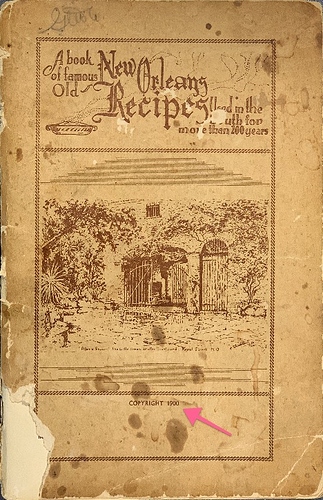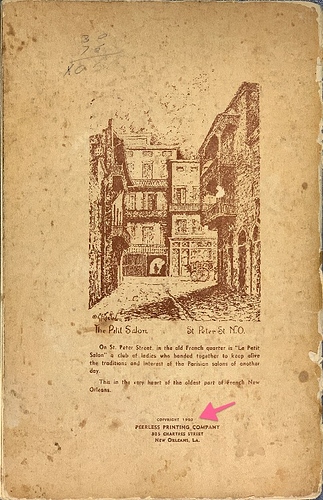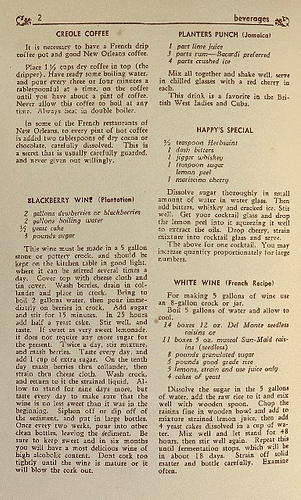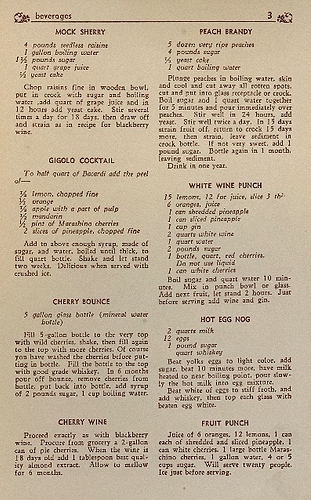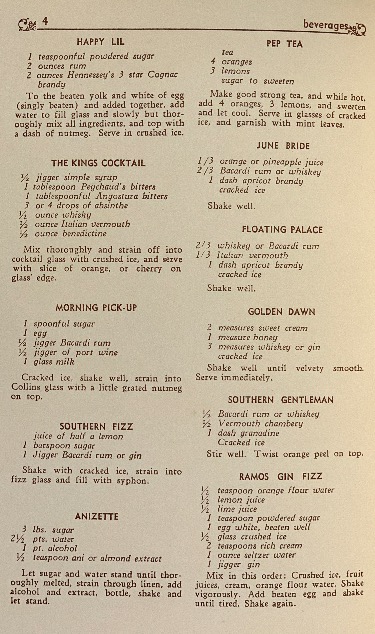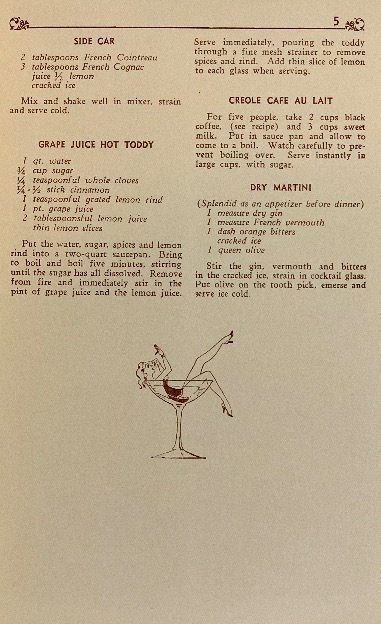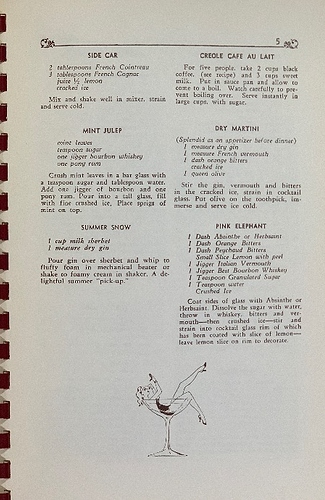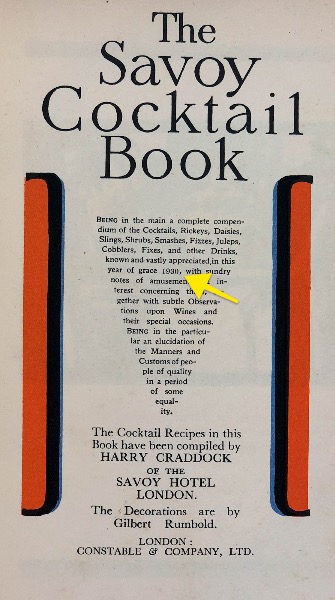We have a number of these booklets in our collection—they aren’t that uncommon and probably remained in print for many years—but only one of ours sports a copyright date, 1900, which appears on both the front and back covers:
There’s no author credited, but a Peerless Printing Company at 305 Chartres St is referenced.
Pages 2-5 contain mixed drink recipes, although things get dicey, fast.
Without even dwelling on the odder drinks, a Side Car in 1900?
Unfortunately, there are plenty of people out there who will get their hands on something like this booklet and take that stated copyright date at face value. If you take a few minutes with Google, you should turn up at least one example on the web where someone has done exactly that. Some might even be gullible enough to take the subtitle “Used in the South for more than 200 years” and conclude that these drinks therefore date to the year of our lord 1700, around the Orleans Parish. [The rest of the booklet contains cooking recipes and perhaps some of them are, indeed 200 years old—I haven’t bothered to look.]
Bottom line: this booklet was printed almost assuredly after Prohibition, but no earlier the 1920s. Most likely, it was printed in the 1930s and compiled by George L. Mayer, a New Orleans businessman, for the local souvenir trade. One of the ways we can put this together is this court record from 1939. That, and the fact we have a pretty good idea whence came the Side car.
We also know that Peerless Printing was involved with early editions of another book, Gourmet’s Guide to New Orleans, that later moved to a different printer. (We have a few later editions of this in the collection, too, but not one printed by Mayer.)
![]()
One might conjecture that once Mayer lost the printing gig for Natalie Scott and Caroline Merrick Jones’ book around 1934, he decided to produce his own similar book. And then he decided to lie about when it was published.
As I mentioned, we have several more copies of Mayer’s book that lack any copyright year. (The year was removed, so it just says “Copyright”.) These later editions are bound differently (plastic spiral-type) and have a few revisions to page five, removing a couple recipes and adding the Mint Julep, Summer Snow and the Pink Elephant.
As you can probably see in the picture, the typography is a little heavier, suggesting this is just modification of an old plate to create a “new edition” at minimal cost. (Lots of old cocktail books show such modifications.)
